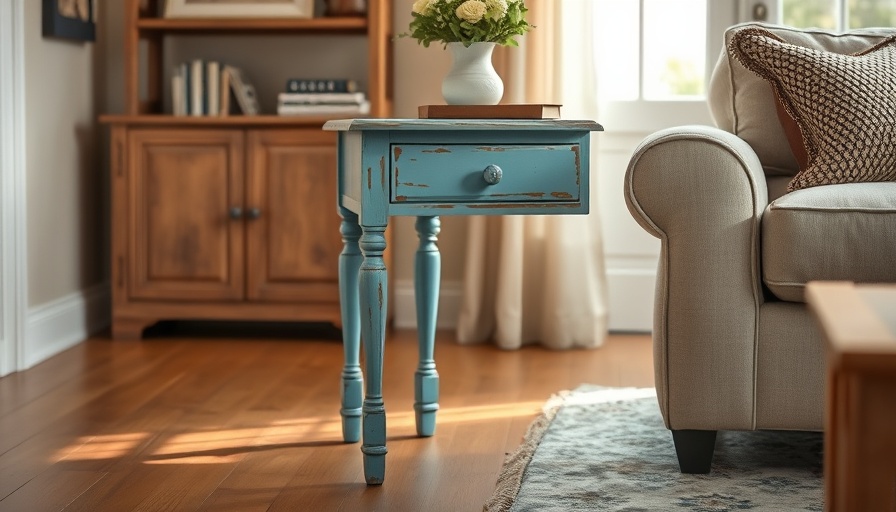
Transforming Furniture with Distressing Techniques
Revitalizing old furniture with distressing techniques is not only a great way to express your creativity but also an excellent sustainable practice. Instead of discarding items that have lost their luster, you can breathe new life into them, creating uniquely charming pieces that add character to your home. This approach is both budget-friendly and environmentally conscious, aligning perfectly with contemporary trends that emphasize sustainable living.
Choosing the Right Piece to Distress
Selecting a suitable piece of furniture is crucial for a successful distressing project. Solid wood options are ideal; they hold paint much better than laminate or plastic furniture. If you're unsure about the material's finish, a simple test with sandpaper can often reveal whether a primer is essential. Always remember, the foundation of great paint work is a well-prepped surface.
Step-by-Step Process: How to Distress Furniture
The process of distressing furniture can be accomplished in several straightforward steps, which include cleaning, sanding, painting, and finishing. You’ll start by cleaning the piece to remove any grease or dust—this is essential to ensure paint adheres properly. Following the cleaning, lightly scuff the surface with sandpaper to give the new paint something to grip onto.
Creating Distressed Effects: Practical Tips
To achieve a beautifully worn look, consider using chalk paints and antiquing glazes. Mixing different paint colors can create depth and interest. For example, pairing a blue chalk paint with a brown glaze can showcase exquisite contrast, making the furniture appear more refined. Remember to seal your piece with a water-based polyurethane to enhance durability and protect the finish.
Real Life Inspirations: Stories of Success
Many DIY enthusiasts share inspiring stories of how they transformed everyday furniture into standout pieces. For instance, one urban apartment dweller converted an old dresser into a vibrant console table with just a few coats of paint and some creative distressing, complimenting the style of their modern interior. Such transformations underscore the notion that anyone can craft unique furniture tailored to their own aesthetics.
Why Distress Your Furniture?
In an era where fast fashion dominates, why not embrace something more meaningful? Distressing furniture promotes a sense of sustainability by reusing what already exists. Furthermore, it allows you to engage in a meditative craft, reducing stress and encouraging mindfulness. Each brushstroke can serve as both an artistic expression and a relaxing hobby, fostering a deeper appreciation for your living space.
Final Thoughts: Embrace the Craft
Furniture distressing is more than just a DIY project; it’s a step towards sustainable living and a pathway to personal expression. By taking the time to transform old pieces into something special, you not only enhance your home but also create stories that resonate with your lifestyle. So gather your materials and get ready to make your furniture a reflection of you!



Write A Comment